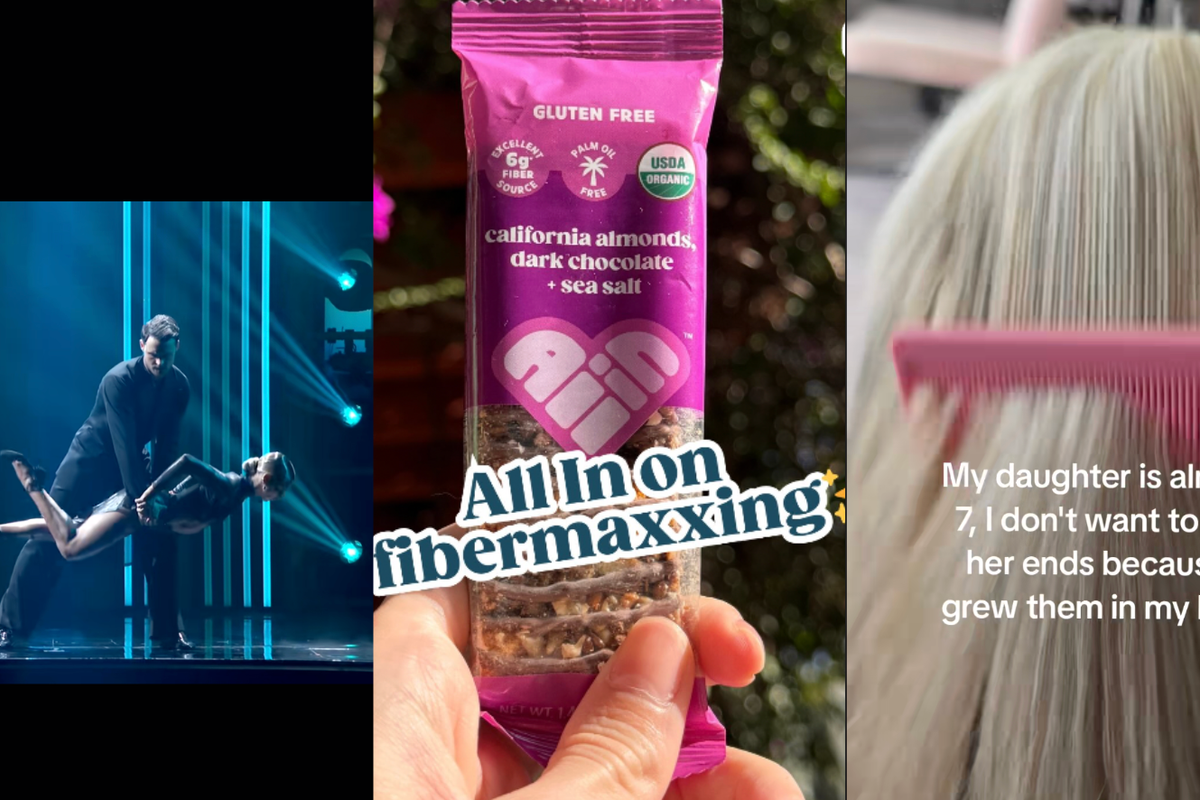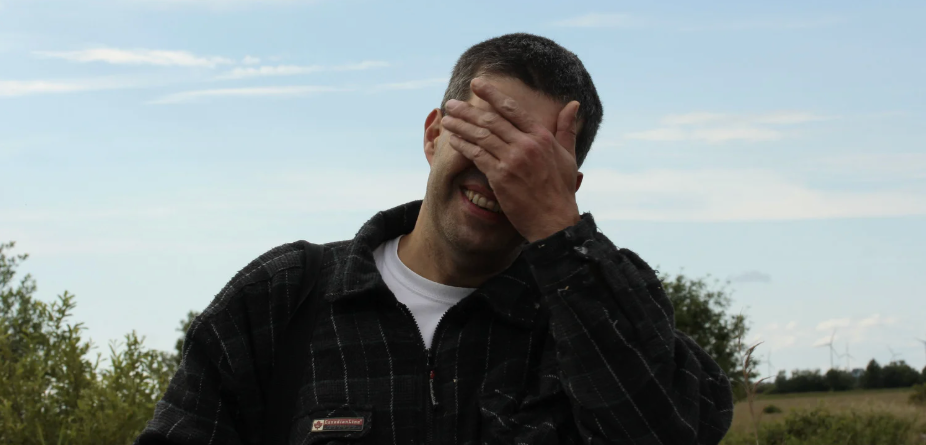Mom races to help after seeing young man passed out and surrounded by traffic on busy road
He was the victim of a hit and run.

Mom races to save young airman after motorcycle accident
There's almost nothing quite as scary as a motorcycle accident. They're not as big as cars and can easily drift into your blind spots if you're not paying close attention. Since motorcycle riders are not protected by the metal framing of a enclosed motor vehicle, their accidents can be catastrophic at a higher rate. That's why there are all sorts of initiatives aimed at getting people to pay closer attention to the motorcycles on the road.
You've probably heard the phrase, "look twice, save a life," or the concept of adopting a motorcycle buddy, which basically entails noticing a motorcycle and providing distance between them and other cars. It can be a good way to make sure the driver is always within your line of sight so you don't lose them in a blind spot and so you can render assistance if they are in an accident. Some families make it a game on roadtrips for their kids to participate in keeping track of the motorcycle riders.
But even with all the additional alertness some motorists attempt to have when it comes to motorcycle drivers, accidents still happen. Sometimes fatal. Sometimes with what appears to be divine intervention where the bike rider manages to walk away with just scrapes while their motorcycle is mangled beyond repair. Debra Bute happened upon what appeared to be a cataclysmic motorcycle accident leaving the unprotected motorist laying in the middle of the road.
Bute is a mom of two teens and noticed the man laying in the road as other drivers simply slowed down to swerve around the injured motorist. She could immediately see that he driver of the motorcycle was a young airman due to his torn uniform, yet no other onlookers attempted to render aid or call an ambulance. The mom didn't hesitate. Imagining what she would want to happen if it had been one of her teens, she rushed to check on the airman, who still remains unnamed.

According to the Pacific Daily News the accident occurred in the early morning hours of August 23, on the island of Guam. There are several military bases located on the US Territory, and the airman arrived at Andersen Air Force Base just six months earlier. The accident took place while it was still dark outside, so Bute was sure to use her vehicle to block other drivers from getting too close the the man laying in the road.
When another motorist realized what was going on, they too stopped to help when Bute asked them to call 911. The mom told the Pacific Daily News, “It was a kid, a young man. That could have been my son."

The road in which the accident happened is very busy and is no stranger to accidents as the outlet explains an accident in July ended in a fatality after a man thrown from his vehicle was hit by a motorist who didn't stop. Bute was able to get an update from the 36th Wing Base Commander, Brig. Gen. Thomas Palenske, who thanks the woman in a social media post.
"I really think that had it not been for the keen foresight, judgement and overall good Samaritan actions of Ms. Bute, to render aid to this person, I think that further tragedy to the Airman might have occurred. She may have truly saved his life," Brig. Gen. Palenske shares.
He was not alone in praising the fast thinking military spouse. Fellow spouses, military members and civilian workers chimed in under the commander's post sharing their gratitude.
"Thank you so much Mrs. Bute. To the airman praying for a effective and speedy recovery. Having worked in property and casualty in the past it could’ve been so different . Insurance world we call the other vehicle a phantom vehicle and for motorcyclists not a lot of them make it out if they do it’s pretty bad . So thank you again Ms. Deb for trusting your instincts, being vigilant and looking out for him and just being a great human," one person writes.

"Thank you for using good judgment and for helping someone in need. I’m even more grateful that you took some training in first aide to help this gentleman. It came in handy today. You are a HERO," another says.
"I came upon scene this morning before the ambulance and fire truck arrived. I saw a lady that was knelt down with the Airman. I have been praying for him all day. Kudos to her for stopping and being with him. I’m so glad to hear he is doing okay," someone else shares.

"I lost my brother-in-law in a motorcycle accident in San Diego back in 2016- he was a Chief in the Navy at the time. Thank you for stopping and helping them out! I'm so glad you were safe and they were able to walked away from this," another commenter reveals.
Thankfully, the unnamed airman was able to walk away from the motorcycle accident with nothing more than a few scrapes and bruises. But if it hadn't been for the woman's quick thinking, the man could've been further injured before regaining his wherewithal to move out of the road.





 "You're hilariously brilliant at everything you hate."
"You're hilariously brilliant at everything you hate."  "Bridget is authentically herself…and triumphs in her own way."
"Bridget is authentically herself…and triumphs in her own way."  "They're written in some curious language that I can't really understand."
"They're written in some curious language that I can't really understand." 
 Woman in denim jacket covers face with sleeve, standing outdoors with blurred background.
Woman in denim jacket covers face with sleeve, standing outdoors with blurred background. Woman with outstretched arms in a sunlit field, enjoying the outdoors.
Woman with outstretched arms in a sunlit field, enjoying the outdoors. Lush forest with vibrant green and orange foliage in soft, misty sunlight.
Lush forest with vibrant green and orange foliage in soft, misty sunlight. Friends laughing and drinking coffee at a cozy cafe table.
Friends laughing and drinking coffee at a cozy cafe table. Woman with curly hair in sunlight, eyes closed, wearing a purple top.
Woman with curly hair in sunlight, eyes closed, wearing a purple top. Man smiling with hand over face, standing outdoors against a blue sky background.
Man smiling with hand over face, standing outdoors against a blue sky background. Hand painting a still life on canvas with blue and orange tones.
Hand painting a still life on canvas with blue and orange tones. Woman sitting on a chair in the water, writing in a notebook at sunset.
Woman sitting on a chair in the water, writing in a notebook at sunset.
 Wash the dishes before I get home from bowling! Photo by
Wash the dishes before I get home from bowling! Photo by  music video 80s GIF
music video 80s GIF 
 An embarrassed woman covers her face
An embarrassed woman covers her face A woman laughs while trying to hide her face from the cameraCanva
A woman laughs while trying to hide her face from the cameraCanva Green Flag GIF by The Last Talk Show
Green Flag GIF by The Last Talk Show A woman covers her faceCanva
A woman covers her faceCanva